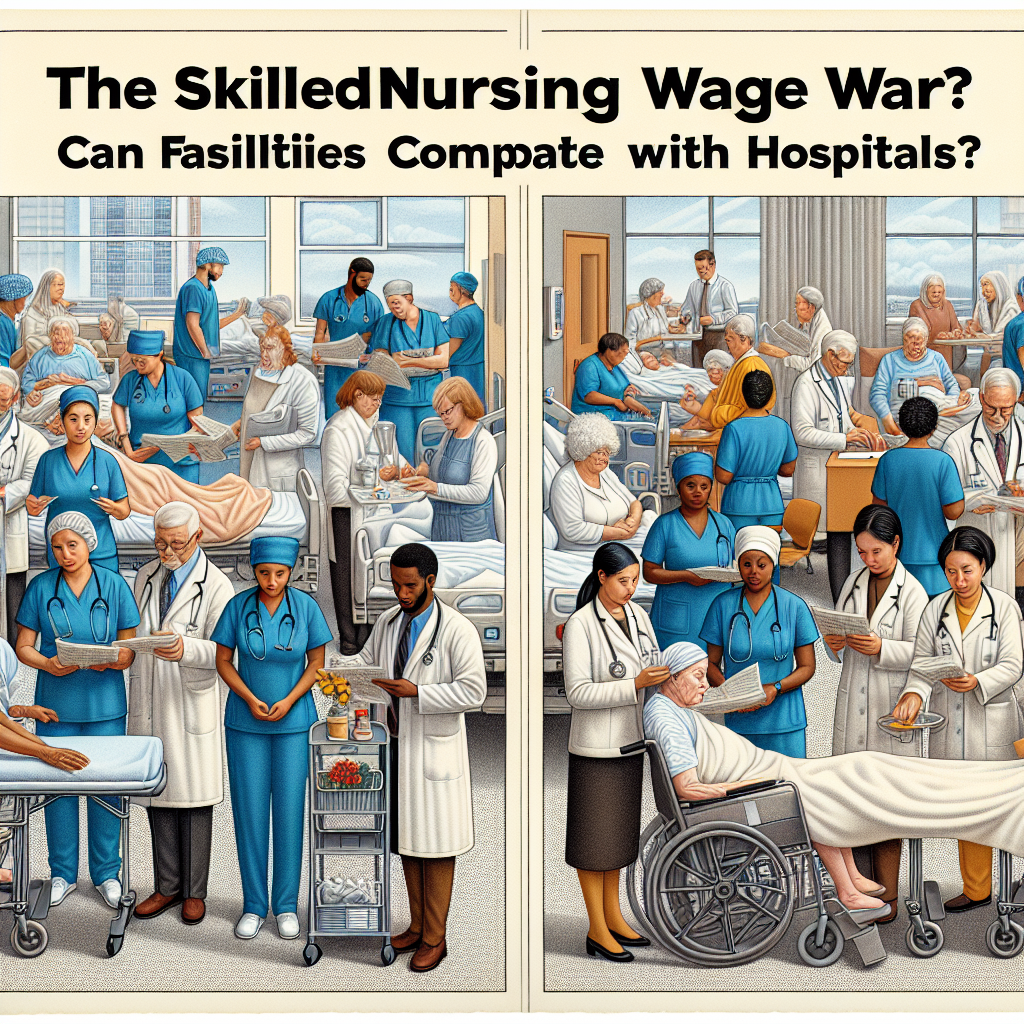New York, NY—In the throes of an ever-escalating wage war, skilled nursing facilities across the nation are grappling with a formidable challenge: can they compete with hospitals for the medical professionals essential to their operation? With a health care sector still reeling from the impacts of the COVID-19 pandemic, this question has never been more critical.
The battleground is set over wages and working conditions, as skilled nursing facilities (SNFs) and hospitals vie for a limited pool of nurses, certified nursing assistants (CNAs), and other health care workers. At the heart of this competition is a stark wage disparity. According to a recent report by the Bureau of Labor Statistics, registered nurses in hospital settings earn an average annual wage of approximately $75,330, whereas their counterparts in SNFs often earn significantly less, with averages around $69,740.
This gap, while seemingly modest, underscores a broader issue of resource allocation and financial capability. “Hospitals generally have more financial flexibility and can offer more competitive wages, comprehensive benefits, and opportunities for advancement,” explains Dr. Sarah Allen, a health care economist. “For skilled nursing facilities, which often operate on razor-thin margins, matching these offers is a Herculean task.”
The consequences of this wage war are palpable. Staff shortages in SNFs can lead to suboptimal patient care, increased workloads for remaining staff, and ultimately, a diminished ability to retain and attract employees. These challenges are not only operational but also deeply affect the lives of the residents these facilities serve, who are often some of the most vulnerable populations.
In response, some skilled nursing facilities are getting creative in their strategies to compete. From signing bonuses and referral programs to offering flexible work hours and investing in staff development and well-being, these initiatives are part of a broader effort to make SNFs more attractive workplaces. Yet, the question remains if these efforts will be enough to close the wage and benefits gap with hospitals.
“It’s not just about wages; it’s about creating a work environment where employees feel valued and part of a meaningful mission,” said Maria Gomez, a nursing director at a New York skilled nursing facility. “We can’t always compete with hospitals on pay, but we strive to offer a community and a sense of purpose that resonates with our staff.”
As the health care sector continues to evolve, the skilled nursing wage war is a vivid illustration of the broader challenges facing health care delivery in the United States. Balancing financial sustainability with quality care and workforce satisfaction is a complex equation, one that will require innovative solutions and cooperative efforts across the industry. In the meantime, SNFs and hospitals alike are vying to navigate this new terrain, with the well-being of both their patients and staff hanging in the balance.


